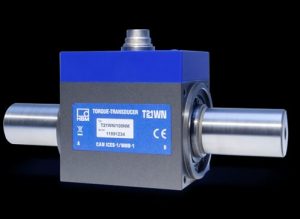 Torque transducer by HBM perfectly suits applications with dynamic and low-static torque
Torque transducer by HBM perfectly suits applications with dynamic and low-static torque
April 25, 2018 REDWIRE is news you can use from leading suppliers. Powered by FRASERS.
Posted by Durham Instruments
One Source For All Your Quantitative Measuring Needs. With Over 50 Yrs.Of Experience In The Instrumentation Field. It Of... Read more
Subscribe
Free REDWIRE e-newsletter

The HBM T21WN torque transducer, available from Durham Instruments
HBM Test and Measurement has excelled in reliable and precise measurement instruments for more than 65 years – including those that measure torque. Among the most remarkable is the T21WN torque transducer, available in Canada from Durham Instruments.
Highly recommended for tasks in the automation sector and in research and development applications, this strain-gauge-technology-based torque transducer uses non-contacting energy and measurement signal transmission in its operation.
Non-rotating and rotating components
With an output signal at nominal (i.e., rated) torque of plus or minus ten volts, the T21WN torque transducer is perfectly suited for measuring dynamic and relatively low-static torque on both rotating and non-rotating components. For example, users can employ the T21WN in test benches for bearings, or for material and haptic tests in research laboratories or in medical engineering. As an upgrade of the T20WN transducer, this instrument is also easy to integrate into the measurement chain with the VK20A, a robust junction box.
Other notable special features of the T21WN include the following:
- High flexibility;
- Standard voltage and frequency outputs, of plus or minus ten volts, or ten to minus five kilohertz (kHz);
- Measuring bandwidth of up to one kHz;
- Compatibility with EtherCAT and PROFINET;
- Rotational speed range that goes as high as 20,000 revolutions per minute; and
- Input voltage ranging from ten to 28.8 volts.
Accessories available separately include five- and ten-metre transducer connection cables, 12-pin cable sockets, junction boxes, and bellows couplings. Users can operate the T21WN torque transducer with bellows couplings in any mounting position, including horizontally, vertically, or at an angle, although the latter two positions require adequate support for the additional elements.
HBM and Durham Instruments advise users not to tighten the couplings’ clamping bolts until after mounting the shafts in the coupling hubs. In addition, it is not a good idea to overstretch bellows couplings beyond permitted flexibility limits. Users must keep drive and output shafts free from grease and burns, and the ideal fit of H7/j6 requires a tolerance of j6 for the shaft diameter.
To learn more, contact Durham Instruments.
Share
Posted by Durham Instruments
One Source For All Your Quantitative Measuring Needs. With Over 50 Yrs.Of Experience In The Instrumentation Field. It Of... Read more
